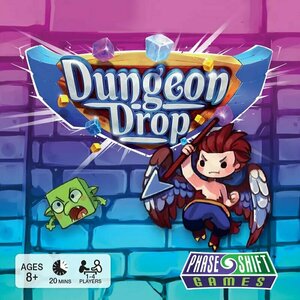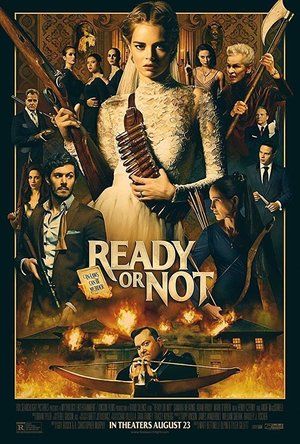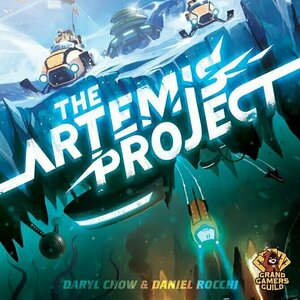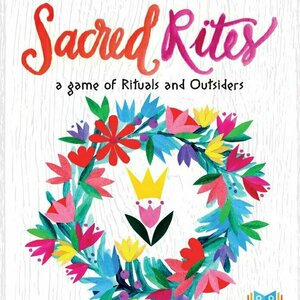Lyndsey Gollogly (2893 KP) rated Fighter (Prophecy #2) in Books
Jun 30, 2020
Kindle
Fighter ( The Prophecy book 2 )
By Jessica Wayne
A plan has been set in motion.With confidence in her magic and the man she loves by her side, Anastasia feels bulletproof. But nothing could be further from the truth. When she and Dakota travel back to Seattle, they find something they never would have expected, and as the blows keep coming, Anastasia learns the harsh reality of what it means to be a Fighter. As her world crumbles around her, Anastasia scrambles to pick up the pieces and fight for those she loves.But the worst is yet to come, because Vincent has a card up his sleeve, and it could change the whole game.
The second book was even better than the first! I love this who concept. The only thing in this one they were all at deaths door at some point I mean Anastasia and Dakota are just yo-yos on deaths finger! But I do really enjoy the world Jessica has built!!

Zoo Sounds Lite - A Fun Animal Sound Game for Kids
Games and Education
App
Take your kids to the zoo, anytime! A fun application to play with your children, and a great...

Choices of One (Star Wars Legends)
Book
From #1 New York Times bestselling author Timothy Zahn comes a brand-new Star Wars adventure, set in...

Dungeon Drop
Tabletop Game
Gather your gear and prepare to dive into the labyrinth! Teeming with untold treasure, the tunnels...
Gareth von Kallenbach (980 KP) rated Ready or Not (2019) in Movies
Sep 2, 2019
Early on we are introduced to Grace. She spent her childhood bouncing from foster home to foster home, wanting a family but just never quite getting one. When she finally finds the man of her dreams Alex (Mark O’Brien) who also is one of the heirs to a giant gaming empire, she believes that all her longing for a family, even one as messed up as his, is finally paying off. Not long after the wedding it is revealed that part of the tradition to joining the family is to play a game. Alex reassures her that the game could be something as simple as checkers or possibly as complex as chess. He doesn’t know as it’s up to a special box, imbued with mystical powers that selects the game that she will be forced to play.
Upon placing the card in the box, and withdrawing it, three little words are inscribed upon it…Hide and Seek. Thinking this is simply a game, and with no further instructions, the family puts on the Hide and Seek record and begin counting to 100. Once the count is up, weapons are handed out to the “seekers” and the game begins.
Not long after finding her hiding spot, Grace quickly becomes bored of playing and comes out admitting defeat. It is only after a series of unfortunate events resulting in the deaths of some of the key players does Grace finally understand that this family plays for keeps. With the help of an unlikely ally from Alex’s brother Daniel (Adam Brody), she not only is given an opportunity to survive the night, but also learns of the pact with the devil that was made which allowed the family to acquire its great fortune. Unless they can satisfy the curse, the entire family will not live to see the sunrise.
Ready or Not takes an outstanding cast and provides them with an equally fantastic setting. Andie MacDowell portrays the creepy mother-in-law Becky, along with her equally creepy and even more unhinged husband Tony (Henry Czerny). Each character plays out their roles in the most over-the-top performances imaginable, an they pull them off more believably then I think they even had intended. Whether its Kristian Bunn as the bumbling Fitch, who is forced to YouTube how to use a crossbow and googles whether pacts with the devil are real or BS…or Elyse Levesque as the stoic Charity, who has absolutely no problem killing someone, if it means she gets to maintain her lavish lifestyle. The cast is truly what pulls the movie off, with their ability to take the absurdity and make it almost feel normal.
Ready or Not does have the occasional jump scare and is literally coated in blood throughout, but it’s the dark comedy that really sets this movie apart from many that have come before it. I don’t know if it’s wrong to laugh at things that should be completely taboo as much as I did. Ready or Not tries to make you think it’s serious, even when you know it is intentionally not. While some of the dialog might fall a bit flat, you’d be hard pressed to notice between your bursts of laughter. You know a movie does something right, when you find yourself quoting it not only immediately after it finishes, but into the next day (and at this rate probably beyond).
Ready or Not is a fun film, that’s the best way to describe it. It’s gruesome and of course violent, but it doesn’t take itself seriously and asks the same of the audience. There have been other movies who have taken this genre too seriously in the past, and lead to mixed results. Ready or Not wants you to laugh at its absurdity and take glee in the events that take place. Based on the individual characters, it’s amazing that the family has survived as long as it has…must be because that card doesn’t come up very often. If you are looking for a fun film, one that you want to laugh at (and with) you could certainly do worse than Ready or Not. It is one of the best dark comedies to come out in years, and it makes me long for the days when movies were still unique and weren’t simply attempting to reboot everything.
Purple Phoenix Games (2266 KP) rated The Artemis Project in Tabletop Games
Apr 6, 2021
The Artemis Project is a game of dice/worker placement in which players are trying to build and sustain a prosperous colony on Jupiter’s moon Europa. Played over 6 rounds, players will take turns rolling and placing dice across the regions of the board to collect resources, construct buildings, recruit and train colonists, and partake in expeditions to explore this vast ice-land. To begin, follow the setup instructions in the rulebook for the appropriate player count. Each player receives a player board, dice, and markers in their chosen color. Populate the board for the first round, select a starting player, and the game is ready to begin!
Disclaimer: I do not intend to rehash the entire rulebook in this review, as there are just too many details. For a more in-depth look at The Artemis Project, pick up a copy from your FLGS or directly from the publisher! -L
To start each round, all players will simultaneously roll all 5 of their dice. Once players are happy with their results, the round is ready to properly begin. Each round is broken into three phases: Placement, Resolution, and Upkeep. To begin the Placement phase, starting with the first player, players will take turns assigning one die at a time to the 7 regions of the board. These regions are: Basecamp, Vents, Quarry, Gantry, Doorstep, Academy, and Outfitters. (I will explain each region in more detail in the next section!) The value of the dice placed in any region is important, because it will dictate what you are allowed to do, or when you are allowed to resolve the action for that region – so choose your placements wisely.
Once every player has placed all 5 of their dice, the Resolution phase begins. During the Resolution phase, each of the regions of the board will be resolved in order, allowing players to perform their region-specific actions. Resolution starts with Basecamp. Placing dice at Basecamp allows players to partake in Expeditions in an effort to earn Expedition Badges (which translate to end-game VP), as well as extra rewards. Each Expedition has a difficulty level which must be equaled or surpassed by the total of all dice placed on that card. If the difficulty is surpassed, the Expedition is a success and rewards are doled out accordingly, but if the Expedition fails, no rewards are earned by anyone.
The next 2 regions, Vents and Quarry, allow players to collect Energy and Minerals, respectively, and are resolved in the same way. Players will collect a number of resources equal to their played die value. Pretty straight-forward! Moving on to the Gantry region, the value of dice placed on any building tiles are considered bids for buying/constructing that building. You can bid against opponents for building tiles, but each bid must increase the previous amount. When resolving the Gantry, the highest value die on a tile is the winner, and that player must pay their die-amount in Minerals to collect that tile. Buildings are added to your colony, and allow you to perform special actions once they are fully-staffed (all colonist slots on the tile are filled).
Next is the Doorstep – depending on the value of dice you placed there, you will be able to recruit 1-3 new colonists. Recruiting a colonist costs you 2 Energy per new addition, and any new colonists you recruit can be placed immediately into any of your buildings (if space is available), or into your Shelter where they will wait to be used. The Academy region allows you to exchange a colonist of your choice for one of a different type/occupation, again, depending on the value of the die used. And finally, the Outfitters region does not resolved during this phase, because it’s action is performed immediately upon dice placement. Any dice placed to the Outfitters gives Tool Kits (used to manipulate die values at the start of each round) to the player, based upon the die value.
The remaining element of the Resolution phase is the Even card. At the start of each round, an Event card is drawn, and will pertain to a certain region of the board. During the Resolution phase, when that region is reached, the Event card will be resolved – either penalizing players or benefitting them in some way. I have purposefully left out a few elements of the Resolution phase for you to discover on your own!
Once all regions have been resolved, the round moves to the Upkeep phase. During this phase, all players can choose to move 1 colonist to a building tile, or swap any 2 colonists between buildings. This is not required, but can only be performed once during this phase. Next, if any players have fully-staffed buildings (all colonist slots are filled), they may activate the listed ability. And finally, for any colonists left in your shelter and not in a building, you must pay 1 Energy for each to keep them warm! The game board is now refreshed for the next round, a new starting player is selected, and the new round is ready to begin. After the 6th and final round, VPs are tallied – earned through number of building tiles, Expedition Badges, sets of resources, and sets of colonists – and the player with the most VP is the winner!
I know that seems like a lot, but I promise that once you start the first round, everything is pretty intuitive and the game flows well. The turn sequence and phases are logical and easy to understand. The game board itself has lots of helpful icons that work as reminders throughout gameplay, and the rulebook has a nice and concise round overview on the last page as well, which is easy to refer back to at a moment’s notice. I’ll go ahead and touch on components here, since I kind of already started to do so. The components in this game are great! The game board and cards are all sturdy and have colorful and immersive artwork. The dual-layered player boards are high quality, the colonist meeples are cute and effective, the building tiles and cardboard chits are strong and can definitely hold up to many plays, and the dice are easy to roll and read. Definitely an A+ on components from me.
I have to admit that The Artemis Project surprised me. At its core, it is a worker placement game, and that in and of itself lends itself to a certain gameplay. You’re trying to complete your own agenda, being the first to snag those important placements that you need to accomplish those goals, while also blocking opponents from doing the same. The thing that makes The Artemis Project unique is that the ‘workers’ in this game are dice. And their value is what dictates the resolution of each region. Just because you place a die in a region first, does not necessarily mean that you will get to resolve first – depending on how your opponents play, they could block you entirely! The use of dice adds an extra layer of strategy to the gameplay that really elevates it beyond a simple worker placement mechanic. Another great thing about this game is that there is no one way to win – there are several strategies that you could play by in an effort to earn VPs. Maybe you are trying to complete as many Expeditions as possible, or want to construct as many buildings as possible. Either strategy can work, and all strategies can easily be adapted and altered during gameplay.
I am so happy that I came across this game on Kickstarter. The game is strategic, engaging, and just fun to play. I’m not necessarily a huge fan of worker placement games, but the approach to the mechanic taken by The Artemis Project really puts a unique twist on it that adds to the gameplay. This is one KickStarter that was definitely worth the investment. Check it out if you haven’t heard of it, or if you’re looking to elevate your worker placement games. Purple Phoenix Games gives it an enterprising 10 / 12.
Purple Phoenix Games (2266 KP) rated Sacred Rites in Tabletop Games
Jan 14, 2021
Sacred Rites is a semi-cooperative, social deduction party game for three to nine initiates. These special few are about to be accepted into the cult full-time, assuming they all know the rites and traditions to be celebrated. Did you remember all your moves to the required interpretive dance?
DISCLAIMER: We were provided a copy of this game for the purposes of this review. This is a retail copy of the game, so what you see in these photos is exactly what would be received in your box. I do not intend to cover every single rule included in the rulebook, but will describe the overall game flow and major rule set so that our readers may get a sense of how the game plays. For more in depth rules, you may purchase a copy online or from your FLGS. -T
To setup gather enough windowed Believer envelopes for the number of players and also include the two Outsider envelopes. Believer envelopes have a cutout section whereas the Outsider envelopes have no cutouts. Shuffle these together and place them on the table Crown-side up (so one cannot see which have windows and which do not). Each player chooses an envelope. Shuffle the deck of Rite cards into a draw pile and similarly shuffle the Tradition tiles into a draw pile. Sprinkle the flower tokens around the table (which I just now considered and should have included that little setup action for more immersion) within reach of all initiates. The game may now begin!
To start a round one player chooses a Rite card from the pile and slides it into their envelope. After contemplating the meaning, they then slide out the Rite and pass it to the next player in table order to peruse in their window (if they have one). This continues around the table so everyone has a chance to “look” at it. Each player then chooses a Tradition tile from the pile and similarly secretly peruses it.
Once everyone has completed these steps the Ritual may begin. Any player may begin by revealing their Tradition tile to the group and stating, “The (whatever Tradition tile says) of our Sacred Rite is…” At this point the player will attempt to give the group a clue as to what the Rite card said without being blatant about it. This could be a word, a movement, a sound, or whatever they so choose. When done, the rest of the initiates respond with, “Ahhhh, (whatever the player just said/did/etc).” Every player will need to present their idea of the Rite with their Tradition, even if they are an Outsider.
When all players have performed, a count of three is made and all players will then either point to the player they feel is an Outsider, or point to the sky to declare they believe no initiate is an Outsider. Initiates who guess correctly immediately score two VP (white flowers), and any initiate not accused will score one VP flower. At this point the Outsider(s) will have a chance to guess the Rite, scoring two VP for a correct guess. The round ends and a new round begins. The winner is the initiate who earns 13 points (or more) first!
Components. This is a BEAUTIFUL game to look at and play. The minimalistic style and color palette are perfect choices for this style and theme of game. The cards are those nice smaller cards, and the tiles are lovely wooden tiles. The VP flower tokens are a nice touch, and it also comes with a great little embroidered bag. This is one of the prettiest games I have played and I love all the component choices made.
The gameplay is something that surprised me. I typically do not enjoy my plays of a similar game called Spyfall, but found myself loving every play of Sacred Rites. You see, in Spyfall players ask each other questions in order to suss out the spy, and rounds can go for too many minutes. In Sacred Rites, each turn is similar in timeframe and have a “shoot-them-to-vote-them-out” mechanic like is found in Ca$h ‘n Guns. I much prefer Sacred Rites to Spyfall and will be pulling it off the shelf every time we get the itch to be shady.
I understand that some people may not be into the theme of rituals for cult initiation, but this isn’t a dark game or have any sort of strange, questionable content. I would feel comfortable playing this with my in-laws as much as I would with anyone’s sweet granny. That said, Purple Phoenix Games gives this one a moonbeam hippy flowerstone 10 / 12. I believe it to be a wonderful addition to any collection, especially if it lacks a somewhat silly game of accusations and performance, or if, like me, your plays of Spyfall are falling flat. I am so happy to have this one I may actually do a full-length interpretive dance right now. Just let me turn off my webcam…

Bamba Post Office (Free) - Wrap gifts, write a card and send it to the postman
Education and Games
App
•••Join 2+ million Bamba customers - kids learn through play with Bamba!••• Kids love...

My Boo Virtual Pet & Mini Game
Games and Entertainment
App
Meet Boo, your very own virtual pet! Enjoy countless hours of fun in this addictive and entertaining...




